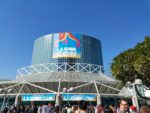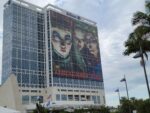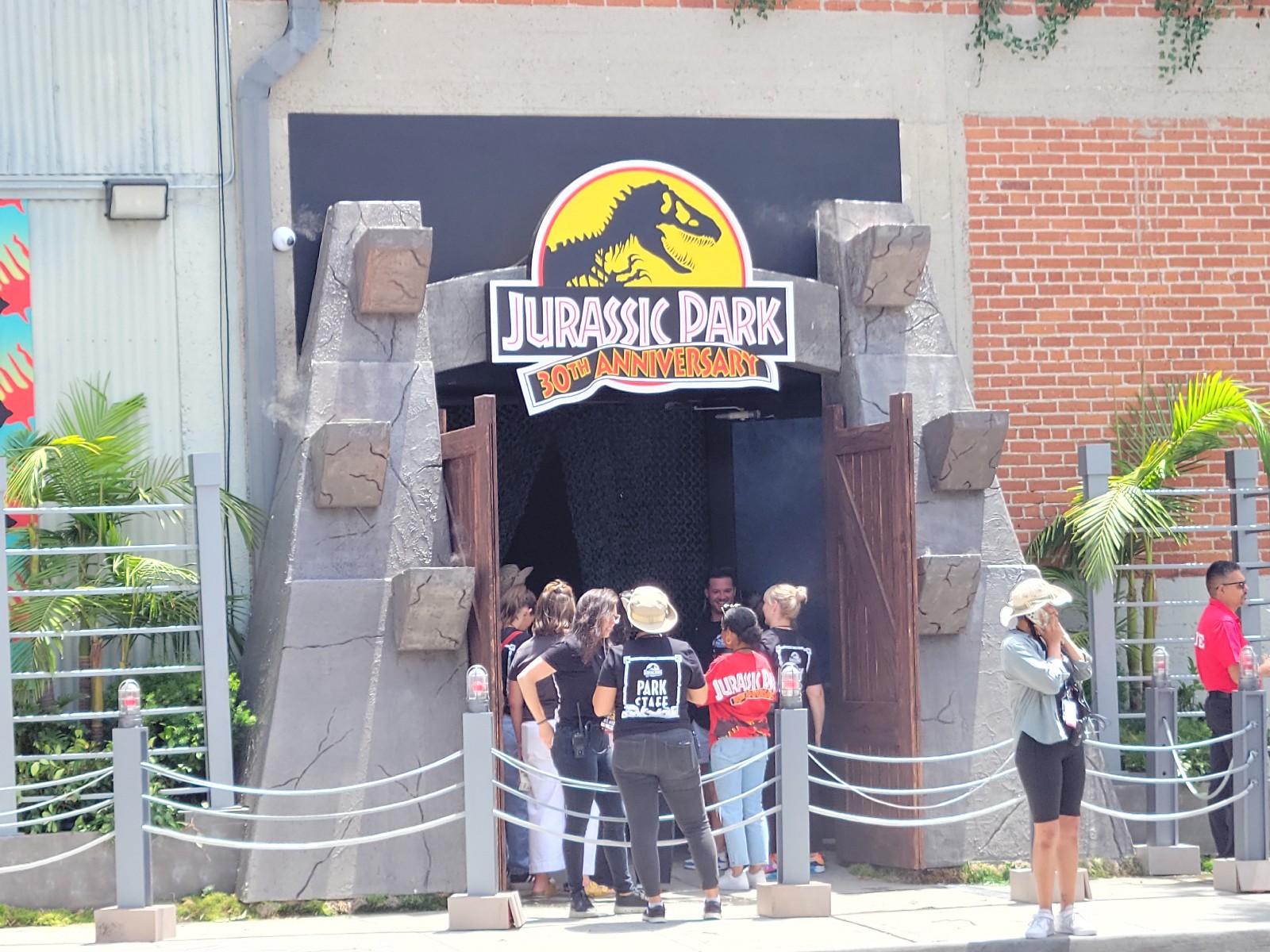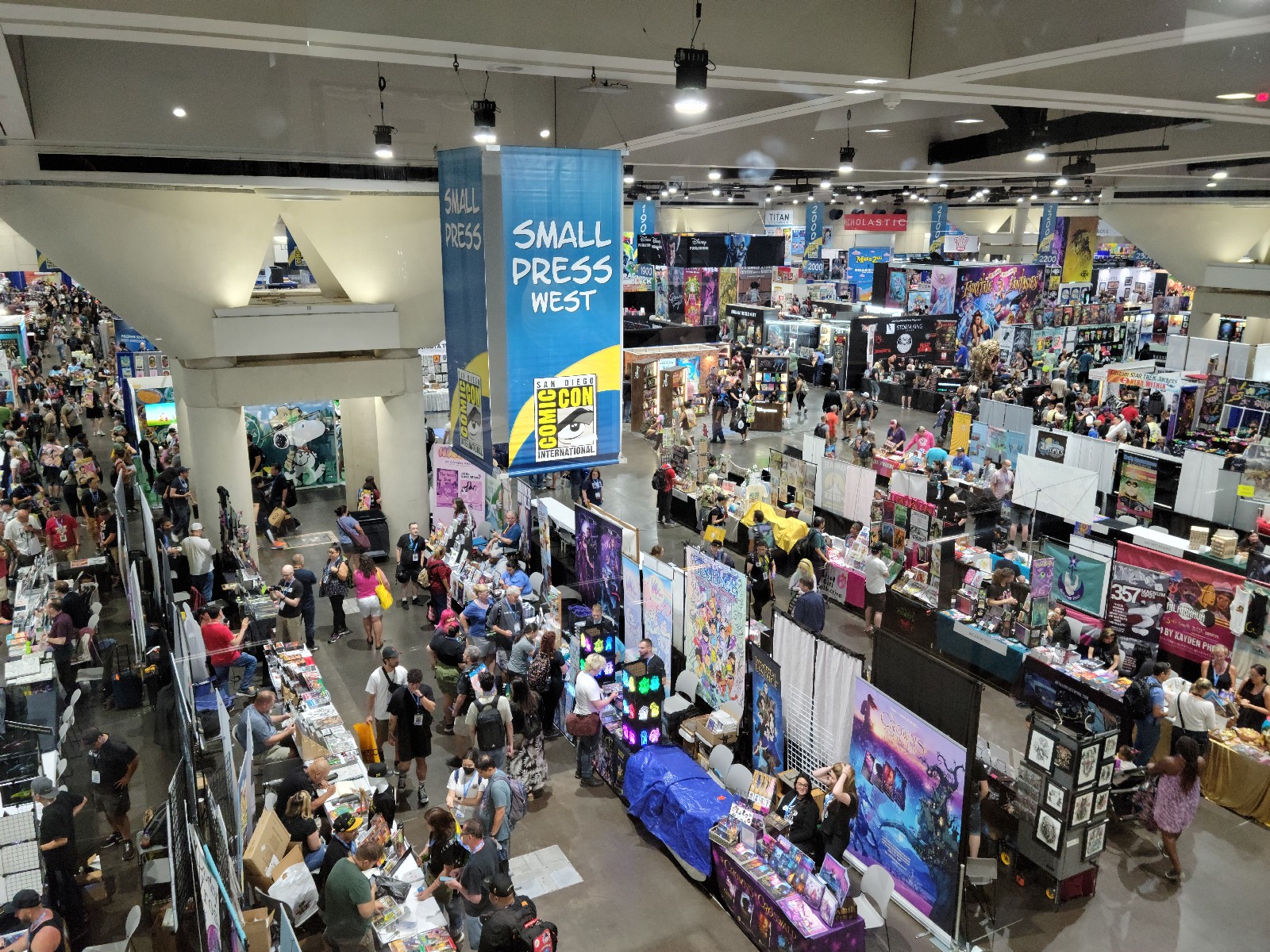Silicon Valley Comic Con 2018 happened over the weekend of April 6-8, and Violet and I made a last minute decision to attend, because the guests announced were pretty exciting. Sean Astin, David Tennant, Krysten Ritter, and a few others were some of the highlights coming to the con. It was our first time attending this convention.
We booked a flight for Southwest Airlines at 7:15am Saturday morning, to arrive around 8:35am. Everything went pretty smooth on the flight, and I watched the first half of the The Dark Knight, arguably my favorite comic book movie of all time.
Upon arriving at the San Jose Airport, we got an Uber, and made our way to the San Jose Convention Center. The drop off place for the Uber was in a bit of an isolated area, and Violet and I were a bit confused. We wandered a bit, and discovered we were actually dropped off in the right place, and went into a blue tent-like structure to pick up our Press badges.
We made our way to the front of the Convention Center and milled about for a few minutes. Then we wandered up to the doors, and made our way into the lobby area of the Convention Center, as Press was allowed in a bit earlier than attendees. It was a little after 9am when we were let in, while the con wasn’t officially open until 10am — though VIPs were allowed on the exhibit hall floor 30 minutes early. Although attendees had RFID wristbands that they had to tap in and out of the building with, Press were given paper badges that did not have RFID.
As the Con was closer to opening for the general public, there was a Star Wars reenactment that started, highlighting the lightsaber battles that happened throughout the films. The various performers were dressed up as Luke, Obi-Wan, Darth Vader, the emperor and other main characters from the films. The performance was pretty good, and the performers used some pretty durable replica lightsabers, as they would whack each other’s sabers pretty hard while battling. We took some video of it, which you can click here to watch.
Once the Con began getting underway, we headed over to Room 220BC which would be where we would remain for the majority of the day. The panels began with some more science-y based panelists, beginning with Mae Jemison.
Pursuing the Extraordinary: A Keynote Conversation with Astronaut Dr. Mae Jemison
Mae Jemison kicked off Saturday for Violet and I at San Jose Comic Con. For those unfamiliar with her, she was the first female African-American in space. For background you can read her Wikipedia.
Prior to Mae Jemison coming out on stage, Nichelle Nichols, who played Lt. Uhura on the original Star Trek series, did an introduction.
Mae Jemison talked a little bit about her life growing up, and how she always felt like she would go to space at some point. She remarked how she didn’t even think it was a question that that would be the case, and found it strange that she was the first female African-American to go.
Interestingly, she also discussed how she was a physician at the time she was looking to be an astronaut, and she discussed how she received a call between patients to go into space.
She also talked a lot about an organization she is a part of called 100 Year Starship, which seems set on redefining the way we look at space travel. Mae Jemison provided some photos showing how current space travel looks, showing external shots of shuttle launches, and internal views of the control panels and such, and remarked how dated and generic it looks currently. Mae explained this organization is trying to excite people going forward to think about new ways to think about space travel, with a 100 year plan to have interstellar ships, which will be unlike anything we have worked on or with before.
She also talked about an African proverb, which was, “No one teaches a child to look at the sky”, which I took from the proverb and Mae Jemison’s explanation, that kids are fascinated with the sky, and they don’t need to be told so. It is a pretty interesting thing to consider, since looking up at the sky does induce a sense of wonder as a child.
Overall, the panel was pretty interesting, and made a lot of good points regarding the future of space travel. Using traditional rockets to reach pretty far into our solar system doesn’t sound like it is going to make a lot of sense in the long term, and having a long term plan as to how to figure out that seems to be a good approach.
Dr. Michio Kaku on the Future of Humanity
After Mae Jemison was Michio Kaku, a theoretical scientist. He came out with the founder of TED Talk, Richard Wurman. The panel was basically a conversation between the two of them discussing various technological and scientific topics.
One example, was discussing A.I. and how current computers are pretty good at what they do, but cannot really offer any way of learning. He also discussed how the robots can be helpful to us in the future, but it might be a good idea to include a “self-destruct” code if the robots seem to get a bit defiant.
Also discussed by Kaku was the idea of uploading consciousness to preserve thoughts of people, which seemed like an interesting concept on its own. But Kaku took this a step farther thinking that the way for humans to get into interstellar travel would be to learn to beam our consciousness into space for travel, rather than figuring out how to send our physical selves into space. This is also a thought of how, if extraterrestrials exist, they would travel the universe. I thought this was an interesting idea, but there are obvious logistical problems with this, such as where are we beaming our consciousness to? A funny tangent that came up regarding this was alien abductions, and basically resulted in Kaku telling the next abductees to steal something for evidence of abduction. Makes sense right? There would be evidence, and as Kaku said—there is no crime regarding stealing from an extraterrestrial!
Kaku also talked about his definitions of civilizations using four categories, based on the technologies that each one uses to expand through the universe. On the scale, Earth is not even a type I yet, still confined to its own planet. A type I civilization is a planetary civilization, which can control all planetary sources of energy, and control the weather. He said that the progression to a type I is getting closer, with the internet being a major leap forward.
Type II civilizations, called stellar civilizations, can harness the energy of its own star, and would be like Star Trek, meaning the ability to explore within one’s own galaxy. Type III civilizations, which are galactic civilizations, would be able to control the energy of an entire galaxy, and explore much of the universe, such as Star Wars would do. Kaku brought up an interesting story of a student who told him there was a fourth type of civilization, which Kaku hadn’t thought of, which were extragalactic civilizations that could harness dark energy.
Another topic that came up was human augmentation, meaning cybernetic enhancements. Kaku had an interesting take on this, feeling that people would certainly want to augment their abilities with machines, but not do so at the sacrifice of their appearance. He seemed to indicate that people would want something removable, or something that wouldn’t visually be too noticeable. It was an interesting thought given many futuristic/sci-fi stories have people looking and becoming more machine than human, when looking hundreds or thousands of years in the future.
Overall the panel was a very interesting one. Kaku seemed particularly interested in the direction humanity is headed, and has written many books on the subject, such as The Future of the Mind, The Future of Humanity, and Parallel Worlds.
Kaku had a lot of interesting topics to discuss, and if I were a smarter person, I think his ideas would make more sense to me. They were definitely intriguing though, and made me think about what humanity will look like, be like, and be living in 100 years, or 1,000 years, or more!
Up next in Room 220BC was Christina Ricci. Click here for our recap and photos of her panel!













